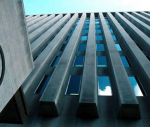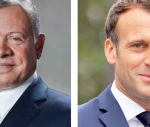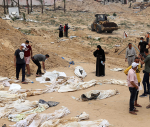You are here
Empowering women to strengthen disempowered societies
Dec 11,2016 - Last updated at Dec 11,2016
Salma fled the war in Syria in 2013, with her mother and her younger siblings after the death of her father; they live in a decrepit room in Lebanon.
Salma wakes up at dawn to head to the fields where she collects potatoes and other seasonal vegetables until sunset, in return for a meagre amount of money that she brings back home to feed her family.
Her daily hardship is punctuated by constant episodes of humiliation, from being harassed by male coworkers to being paid less than the young boys on the field, to being offered money in return of sexual favours from her landlord.
One day, Salma’s mother finds what, in her opinion, is the best solution: she agrees to marry Salma off to distant relative who has also fled to Lebanon.
The catch, though, is that Salma is 16 and the relative 47.
But for Salma, a refugee, a child bride, a teen mother deprived of education, these 16 days [of activism against gender-based violence] are light years away from her daily new reality as a pregnant adolescent, a child herself now carrying a child, a young woman expected to accept discrimination even in her meagre wages, a human being whose aspiration to live a life free of humiliation and abuse is not fulfilled.
Although education is a fundamental human right recognised in the 1948 Universal Declaration of Human Rights and a building block to skills and knowledge, employment and gender equality, political, economic and social shifts and upheavals consistently leave women and girls denied this right.
Unfortunately, the Arab region still abounds with examples where women and girls are denied several fundamental rights, despite declarations of intentions and adoption of formal documents.
The number of girls in schools, young women in universities, and women in the workspace and in political positions lags far behind that of men.
A combination of lack of education and lack of employment paves the way for lack of empowerment for women, and contributes to exposing girls and women to abuse.
From domestic violence to rape and other forms of sexual assault, to sexual harassment, to child and forced marriage, to female genital mutilation to so-called honour killings, the ugly list of violent acts against women and girls is long and often socially accepted.
In Egypt, for instance, the prevalence of domestic violence, affecting one in three women, did not change over the last two decades.
In Morocco, a national survey estimated the prevalence of violence at 62 per cent.
In Palestine, 29.9 per cent of ever-married women in the West Bank and 51.1 per cent in the Gaza Strip were exposed to one form of violence from their husbands.
In Jordan, recent research revealed that 34 per cent of ever-married women age 15-49 have experienced physical violence at least once since age 15.
In Iraq, about 46 per cent of girls 10 to 14 years were exposed to violence from a family member at least once.
Can these trends be reversed?
Yes, they can.
The United Nations Population Fund (UNFPA) works very closely with governments and with communities to reverse trends and change certain harmful practices, particularly affecting adolescent girls.
It takes a mix of political will, and social and community mobilisation to start changing trends.
It takes planning, including adoption and implementation of national legislation, to ensure that every child is in school and that no girl becomes a mother when she is still a child herself.
It takes awareness about the nasty effects of deprivation of education and knowledge on the entire society to realise that young girls, half of the young society, should no longer be sidelined, abused, harassed and pushed out of childhood and into decisions they have not taken part in.
On International Human Rights Day, and at the end of an international campaign to end violence against women, the moment is opportune for a very clear stand in support of the right of young girls for a brighter future, where, if they are educated and empowered, they can help lift their societies up on the ladder of development.
Let us reimagine Salma’s story in line with what human rights values dictate: Salma would be a 16-year-old girl in high school, already starting to think about her future options.
She would be learning about the world and about herself, including about the various transformations that her body is undergoing.
She would have a place she calls home, a family, a sense of purpose.
She would ideally be studying hard with the hope that she would pursue her education and eventually find employment.
She may choose to start a family, and would be able to decide when and how frequently to have children.
Salma should be a fulfilled young woman.
The writer is UNFPA’s director for the Arab region. He contributed this article to The Jordan Times.












